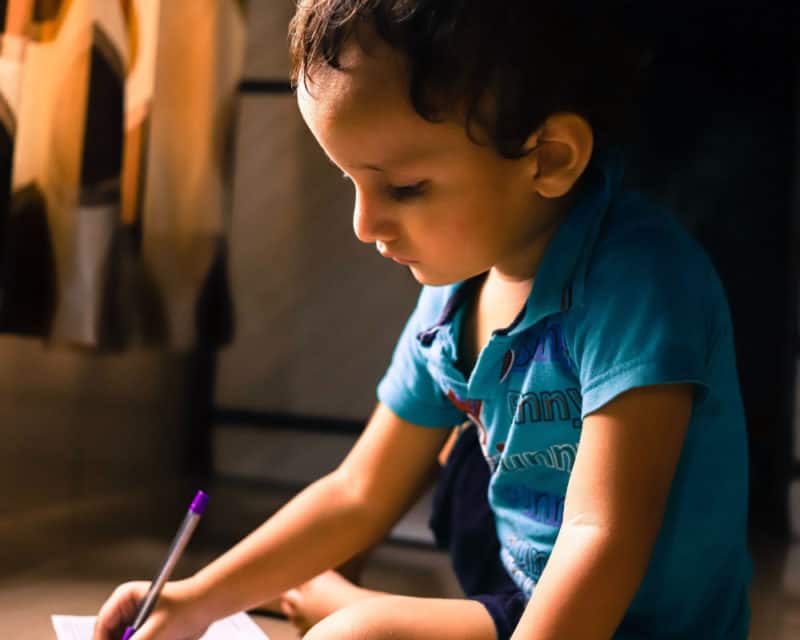Children pass through developmental stages as they learn to write. Initially, toddlers may wrap all their fingers around a writing utensil like a crayon. Their early printing skills and initial markings are scribbles as they experiment with writing and colouring. They may show a preference for writing with a certain hand, although hand dominance is not necessarily set in stone at this point. You may have seen a toddler scribble with one hand, then switch to the other hand when it gets tired!
How writing changes as they develop

As they develop, children’s scribbles begin to take on more purpose. They are no longer random markings on a page. Instead, children begin to assign meaning to their writing. It may still appear to be random shapes and lines, but children can identify what they’re supposed to represent.
Drawings resembling letters
Over time, children may begin adding formations that resemble letters to their drawings. This is continued experimentation with writing. Children may begin writing less haphazardly on the page and use more left to right directionality. Although they are not forming letters, they are imitating writing they have seen. Children may also be developing their pencil grasp. Although it is not efficient yet, they may start to have their fingers facing downward towards the end of the writing utensil. Children are typically still using a lot of arm movement when they write.
Uppercase
As they begin to notice the physical characteristics of letters more, you may see children’s writing progress to include a few familiar letters, interspersed with other markings. It is common to see letters printed mostly in uppercase and for some to appear backwards. These early strings of letters often do not include any spaces between them. The next step will be separating the strings of letters with spaces, making children’s writing begin to resemble words. Their pencil grip is continuing to mature, and they may be holding their pencil with a three or four-finger grasp.
Copywriting

During the next developmental stage, children may start to copywriting what they see in their environment. This could be observations from a birthday card, a grocery list, books, or other print sources. They may not know how to form each letter correctly but try to mimic what they see. Their arm moves minimally when they write, as their pencil grasp strengthens.
Correct letter formation
It is around this stage when children’s interest in learning to write can peak, and they are motivated to learn how to form letters correctly. Up until this point, they may be “drawing” letters based on what they see and lack an efficient pathway to form the letters accurately. Teaching children how to print letters correctly is advantageous. It helps their writing become legible, allows them to develop automaticity with their printing, and increases their writing speed.
Practicing Letter Writing
There are many ways for children to practice writing letters. Kindergarten worksheets and letter formation guides show children how to use the proper pathway to form each letter. Guided practice can include tracing letters before moving on to writing them independently. Practice can also incorporate writing letters within the context of words. This helps children learn how to space their letters properly.
Writing Tools

Children may enjoy other types of printing practice, including using different writing tools such as chalk, markers, and pastels. They can mimic letter formations using scarves in the air. They can even practise “writing” letters on a friend’s back! Provide children with authentic writing activities, too, like writing a letter or postcard to a relative, making someone a card, or helping you write a list. Keep in mind that children progress at different rates, offer them guidance, and keep it fun!

